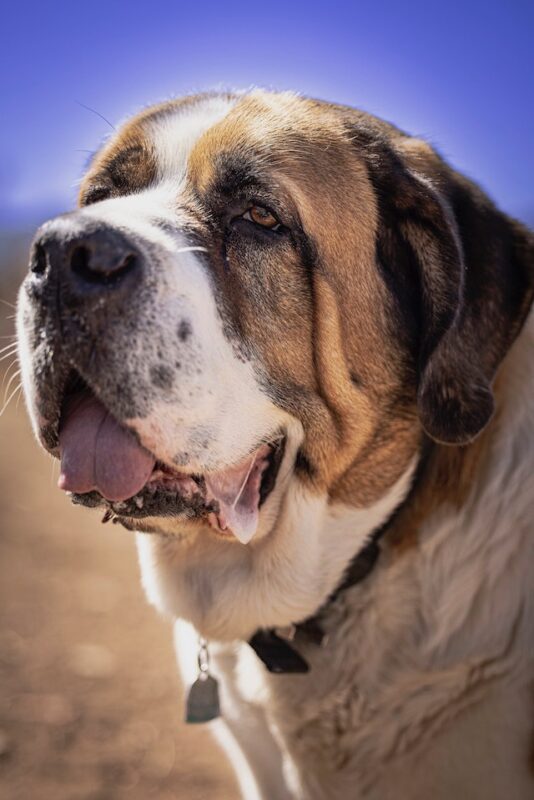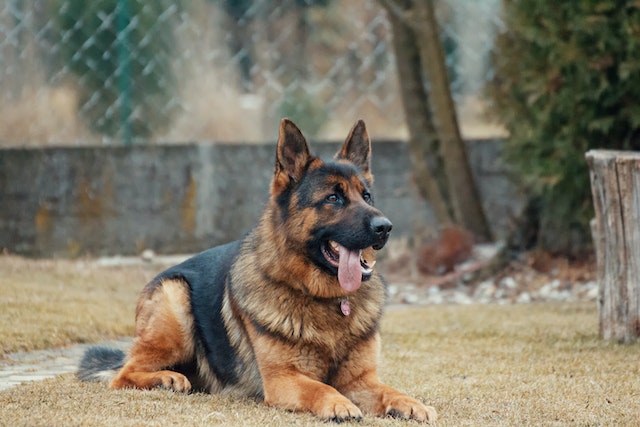ACL Tears in Dogs: Signs, Causes and Treatment
Posted: 06/09/2023 | BY: Jenna Bruce | Categories: Dog , Health problems , Top Tips
A second ago your dog was running through the house with no issues. Now you see him limping, significantly. What on Earth just happened and should you be worried?
While you hope your pup has somehow just sprained his paw, there may be a chance he has a torn ACL (anterior cruciate ligament). This ligament connects your pup’s femur (thigh bone) with his tibia (shin bone) in the knee joint. As you can imagine, your dog’s ability to move freely is dependent on this important ligament. A tear can absolutely jeopardize his ability to enjoy playing and being active.

Signs of ACL Tears in Dogs
It’s important to recognize the signs of an ACL tear in your pup so you can determine the severity and get him the help he needs. The following are some of the most common signs that suggest your dog may have torn his ACL:
Limping or Lameness
Is your dog not walking as quickly or nimbly as usual? Does he stagger and stumble a bit?
Stiffness
When the ACL tears, it causes other ligaments to retract and become stiff, limiting the range of motion in the joint.
Swelling
Once the ACL has become damaged, it’s common for inflammation to set in around the knee joint. This causes swelling, which can also impede your pup’s mobility.
Abnormal Sitting Position
If you’ve noticed your dog has begun to sit awkwardly, don’t just laugh and think it’s funny or adorable, there’s a reason he now sits differently and it’s usually because of an injury and/or pain.
A Clicking Sound
If you’ve heard the sound, you’ll never forget it. Ligament tears typically result in damage to the cartilage pads. This causes a sickening clicking or cracking sound when your dog walks and his joint bones rub up against one another.
Lifting Their Leg When Walking
When your dog has pain in their joint, you’ll notice him walk a little bit, then stop and lift his leg, then walk a little bit, then stop and lift his leg. This helps him avoid putting pressure on his compromised joint.
Vocalizations
Many dogs will become more vocal when they are in pain. If your dog is suddenly whimpering or yelping when moving, you’ll know something is not right.

Causes of ACL Injury in Dogs
Human beings tend to tear their ACL through some sort of sports or recreational injury. ACL tears in dogs can happen for a variety of reasons:
Sudden Trauma
ACL tears can happen when there is a large and sudden force on the knee. Whether a dog is running, jumping or falling from a great height, the sudden impact and trauma can cause the ACL to rupture.
Age
It’s not uncommon for a dog to develop minor ACL tears throughout its life. As it ages, it now has an ACL that is fairly compromised and can give way and completely tear.
Extra Weight
Large breed dogs that are overweight are prone to ACL tears. The added weight puts added pressure on the dog’s joints and can lead to a ligament tearing.
Breed
What many dog parents don’t realize is that the most common cause of ACL tears in dogs is genetics. That’s right, there are certain dog breeds that are simply more prone to developing these tears. Researchers aren’t exactly sure why these breeds are more prone as of yet. In some instances, it may simply be the large body frame. But as you’ll see, not all of the breeds are large.
At any rate, if you are have one of the following breeds in your care or you’re thinking of adopting one, be aware that they are particularly susceptible to ACL tears:
- Bichon Frise
- German Shepherd
- Labrador Retriever
- Newfoundland
- Rottweiler
- Saint Bernard
- Australian Shepherd
- American Pit Bull Terrier
Something else to be aware of: At least half of dogs that develop an ACL tear in one knee will likely develop the same problem in the other knee at a future date.

Why Pet Insurance is a Must
While all pet parents should definitely consider enrolling their fur baby into a pet insurance plan, it’s a no-brainer when you care for a breed that has a genetic predisposition to a health condition such as ACL tears – a health condition that is very expensive to fix. According to data from Care Credit, ACL surgery can cost anywhere between $2,000 to $4,000. That’s per leg. If your sweet pup develops a tear in his other leg, you can double that vet bill!
Not many pet parents can comfortably be hit with an unexpected bill in the thousands of dollars. Most of us are having a hard time right now paying our mortgages, putting food on the table and gas in the car. And this is why it is so necessary for pet parents of dog breeds prone to ACL tears to enroll their pup into a plan as early as possible.
And why do I say AS EARLY AS POSSIBLE?
Because most pet insurance providers have a required waiting period before coverage of ACL surgery kicks in. It’s common for insurance providers to have some kind of waiting period to mitigate people scamming the system. Usually a company will have a 3-7 day waiting period before the accident portion of the coverage kicks in and a 10-14 day waiting period for the illness portion to begin.
But because ACL problems are so expensive to treat, they’re often subject to longer waiting periods and stricter exclusions than other illnesses and injuries. In many cases you will have to wait 6 to 12 months before your coverage for ACL injuries is available.
In addition, some companies have what are called “bilateral conditions exclusions.” This means if your pup develops ACL problems in one hind leg, ACL problems in the other leg would be considered a “pre-existing condition” and it would be excluded from coverage. Providers are able to look at your pet’s medical history and can see if there is a past ACL surgery there. They can actually see if there is any mention of a limp at all. If you have a certain breed with a history of “weird limping” you may be denied coverage.
All of this is to say, it is vitally important to enroll your dog into a pet insurance plan when they are young and healthy. This way you don’t have to worry about a long waiting period or being denied coverage for past ACL issues.
The Bottom Line
You love your dog and want to know that you can always get him the best care he needs when he needs it. If he happens to be one of the breeds on this list, it is incredibly important that you enroll him into a pet insurance plan so you’re never hit with an unexpected vet bill in the thousands of dollars. And get him coverage as early as possible so you don’t have to deal with longer waiting periods and strict exclusions. Be sure to read all of the fine print before buying a policy and if you have any questions, get on the phone with the company and have those questions answered so you’re 100% clear.
Pet Insurance Protects Your Pup and Your Wallet
If you are a pet parent of any of the breeds mentioned in this article, prepare yourself for potential high vet bills in the future by enrolling your pup into an insurance plan NOW. Monthly premiums can be as low as $25 and reimbursement rates can be as high as 90% of the bill. Find the plan that fits your needs and budget now.
References:
- https://orthodog.com/article/dog-acl-tear-no-surgery “Can a Dog Recover From an ACL Tear Without Getting Surgery?”
- https://vetmedbiosci.colostate.edu/vth/services/orthopedic-medicine/canine-cruciate-ligament-injury/ “CANINE CRUCIATE LIGAMENT INJURY”
- https://www.ctvsh.com/services/blog/acl-injuries-dogs “ACL Injuries in Dogs”
Disclaimer
The information contained on this blog is intended for informational and educational purposes only and should not be construed as medical advice. It is not a substitute for professional veterinary care. Always consult with your veterinarian before making any changes to your pet's health care or treatment plan.
The authors of this blog are not veterinarians and do not claim to be experts in pet health. The information provided here is based on our own experiences and research, as well as information from reputable sources. However, we cannot guarantee the accuracy or completeness of this information.
We encourage you to do your own research and consult with your veterinarian before making any decisions about your pet's health.
Compare top pet insurance providers plans.
Enter your dog’s age in years and months to calculate their age equivalent to human years.
Calculate your dog’s ageEnter your cat’s age in years and months to calculate their age equivalent to human years.
Calculate your cat’s age